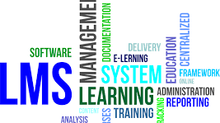Knowledge checks in eLearning
- Dylan Hedges
- May 7, 2019
- 2 min read
When designing and developing eLearning courses testing your learners periodically on your learning content can provide a number of benefits. Using knowledge checks can be one really effective way to do this, a knowledge check usually consists of 1-3 questions that are place at the end of a chapter/section of your eLearning course and are related to the learning content the learners has just consumed. Using knowledge checks can be very beneficial as it helps with knowledge retention, engages the learner and reinforces concepts they have just learnt.
Questions for knowledge checks can be created in a variety of ways both in terms of design and interactivity. Below are some examples of question types you can use for knowledge checks in your eLearning.
1. Multiple Choice
Multiple choice is one of the most common and effective forms of questions you can use in your eLearning. Typically a multiple choice will question will first state the question, then below it the learner will have then around 1-4 options to choose from, out of the options only one of them is correct, the others will result in an incorrect answer. The benefit to using this type of question is that it is straight forward and clearly displays if the learner got the question correct or incorrect. This type of question can use audio or images to add additional interactivity.
2. Multiple Response
Not to be confused with multiple choice questions, multiple response questions typically have 2 or more correct answers. Instead of the learner having to choose one answer from a list of possible answers in a multiple response learners can select a combination of answers. If the learner selects the right combination of answers they get the question right, if they select some of the correct answers they get it wrong or get partial points depending on how you code the questions. These types of questions challenge learners more as they not only have to think carefully about what the right answer is but also have to ensure they don’t accidently select correct answers in combination with incorrect ones.

3. Drag and drop
Drag and drop questions are very different from the previous two in that instead of using text the question will involve the learner interacting with shapes and images. For example the learner may have several answers that need rearranging in a specific order or have to drag answers into certain areas of the screen. The benefit to this type of question is that it provides a higher level of interactivity and is not as static as multiple choice or multiple response questions, however it can take more time to code due to additional moving parts and it may be difficult to get all the information you need on screen.


































Comments